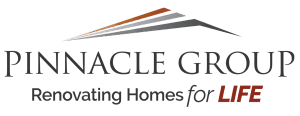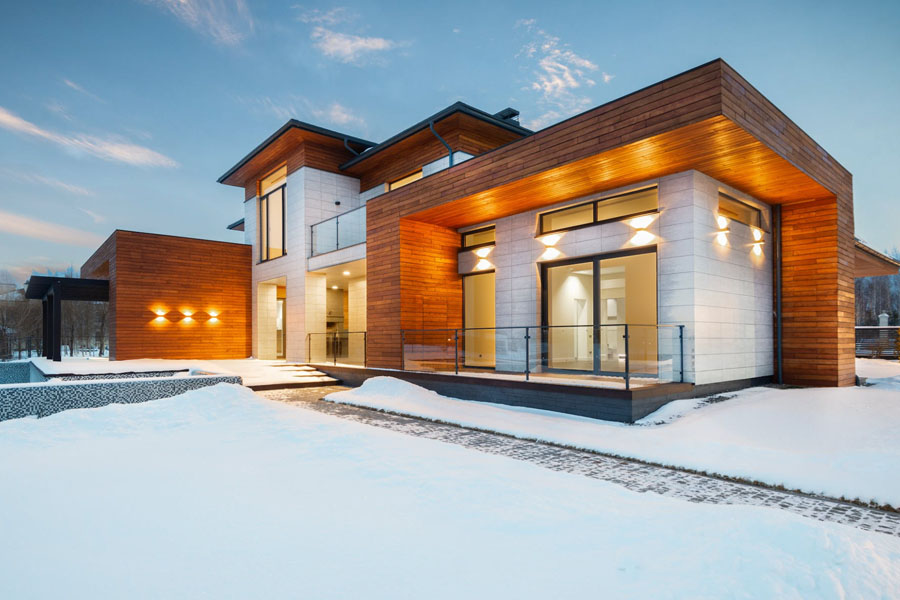As the seasons shift and the crisp, cool air of autumn signals the incoming arrival of winter in Calgary, it’s a good time to begin preparing your home for the challenges that the colder months can bring.
Ensuring your home is ready for winter not only keeps you and your loved ones warm and comfortable during the bitterly cold months, but it can also save you from costly utility and repair bills down the road. In this guide, our experienced home renovation team will walk you through some essential steps to winterize your Calgary home and keep everything in good working order.
What tools do I need to prepare my house for winter?
Before you devote some of your time to winter-proofing your home, it’s important to have the right tools ready to go. Here’s a list of some of the most common tools that homeowners in Calgary will need for effective winter preparation. You likely have many of these at hand already; however, some may require more specialized purchases, such as finding a ladder tall enough to inspect upper-floor windows and eavestroughs.
Common “winterize home” tools
-
-
- Basic hand tools (e.g., hammers, screwdrivers, a wrench set, etc.)
- Snow shovel
- Weatherstripping
- Caulking
- Flashlights
- Insulation (for open spaces and around pipes)
- Gutter cleaning tools (i.e., extendable cleaners that can clear out long sections)
- Chimney brushes and flue cleaners
- Spare furnace filters
- Ladders
- Cleaning supplies
- Power tools may be required (such as saws, drills, and air compressors)
-
What if I don’t have access to something I need for winterizing?
You may find yourself in a situation where the tools you need are highly specialized, beyond your budget, or unavailable for purchase. If so, call around to the rental departments of local hardware stores, which often offer rental services for a wide range of items: power saws, oversized ladders, specialist tools, and much more.
While this can be an excellent and cost-effective solution, remember that many other people will have the same idea as the snow starts to fall. The earlier you can make your claim and get the work done, the less stressed you will be when the temperature dips.
Improving efficiency and moisture protection
- Clean window weeping holes: Cleaning the debris from weeping holes in your window frames helps prevent moisture buildup, reducing the risk of mold and water damage to low-lying areas of the frame and surrounding materials.
- Make sure all windows are intact and able to close: Inspect all windows for cracks, gaps, or damaged seals, ensuring they can close tightly to prevent drafts and heat loss, ultimately reducing your heating costs.
- Check seals on all windows and doors for drafts or condensation: Replace worn or damaged weather stripping and seals around your windows and doors. This is a major contributor to airtightness and draft prevention, which can significantly impact your home’s energy efficiency.
- Inspect your attic insulation: Ensure your attic insulation is sufficient and in good condition to keep warm air inside during the winter. Proper attic insulation is vital l for lowering energy costs and maintaining a comfortable indoor temperature.
- Seal any gaps around pipes and cables: Identify and seal any insulation gaps or openings around pipes, wires, or cables entering your home. This helps prevent cold drafts, which in turn prevents unpleasant surprises on your heating bill, as well as blocking entry points for rodents and other unwelcome guests.
Utilities (heating, plumbing, and ventilation)
- Replace your furnace filter and get an inspection if needed: Regularly changing your furnace filter is essential for maintaining efficient heating throughout the colder months; if you have any doubts about your furnace’s performance or gas lines, consider a professional inspection to address any potential issues before the cold weather sets in.
- Clean your heat recovery ventilator (HRV) if you have one: If your home is equipped with an HRV system, cleaning it regularly ensures proper ventilation and maintains indoor air quality during the winter months when your home is tightly sealed to conserve heat
- Check your humidity settings: Maintaining the right indoor humidity level plays a big part in the comfort of you and your family and your overall energy efficiency. Make sure your home’s humidity is within the recommended range to avoid dryness or excess moisture – many humidifiers and HVAC systems even have built in summer/winter settings.
- Check over your hot water tank and heater: You may not think about your hot water system that much, but it will be all you can think about it if isn’t working in the middle of December! To avoid any frigid surprises, inspect your hot water tank and heater for any signs of wear, mineral build-up, loose connections, low fuel flow, or other potential issues.
- Get a programmable thermostat to save on heating: If you don’t already have one, installing and programming a thermostat allows you to optimize your heating settings according to your daily routine. This can lead to significant energy savings by reducing heating when you’re away or asleep. You can now automate or control many of these directly from your phone or other smart devices, making it more convenient than ever to save a little more on your utility bills.
Checking your appliances before winter
- Do any necessary maintenance on a fireplace: Ensure your fireplace flue and chimney are clean and in good working condition if you plan to use them during the winter. If you’re unsure of how to do this, call a professional to take a look – it’s not worth the risk to your home to guess.
- Winterize your A/C unit: Protect your air conditioning unit from winter weather by properly clearing away any debris, disconnecting it from its power source, and then fully covering and securing it. This prevents damage to any components and will prolong the life and performance of your A/C system for years to come.
- Check the batteries in smoke and carbon monoxide detectors: With windows sealed and more people indoors using gas appliances like stoves, furnaces, and fireplaces, it’s important to ensure the safety of your home. Test and replace the batteries in smoke detectors (on the ceilings) and carbon monoxide detectors (near the floor on each level) to give yourself peace of mind.
Keeping your interior clean
Have a plan for snow clearing from your driveway/walkway: Whether it’s a friendly neighbour, a purchased service, or a bit of your own elbow grease, you should have a definite plan for clearing snow once it starts to fall. Sidewalks and driveways must be cleared within 24 hours according to city bylaws, and doing so will result in less snow tracking from outside back to your porch, mudroom, and nearby floors. It will also be easier to get your vehicle out when you need to do so.
Need help with winter preparation in Calgary?
Preparing your Calgary home for winter requires attention to detail and careful planning; however, if you’re following the steps outlined in this guide, you can keep your home ready to face all the challenges of the cold season.
With that said, we understand that preparing to winterize your home can be a substantial task, and you may require assistance with specific aspects of the process. If you or someone in your family is already a past Pinnacle client, then you’re in luck – we offer the MyHomeConcierge™ service in which you receive a visit from a one of our representatives who can help with the upkeep and maintenance of your home, including much of the winter prep listed here.
If you’ve got other questions about how you can create smart home designs and features to maximize its energy efficiency and resilience through Calgary’s temperature swings, don’t hesitate to reach out! Our experienced team is here to assist you, and we’re just a click away. We look forward to helping you get the most out of every square foot of your forever home, all year round.

